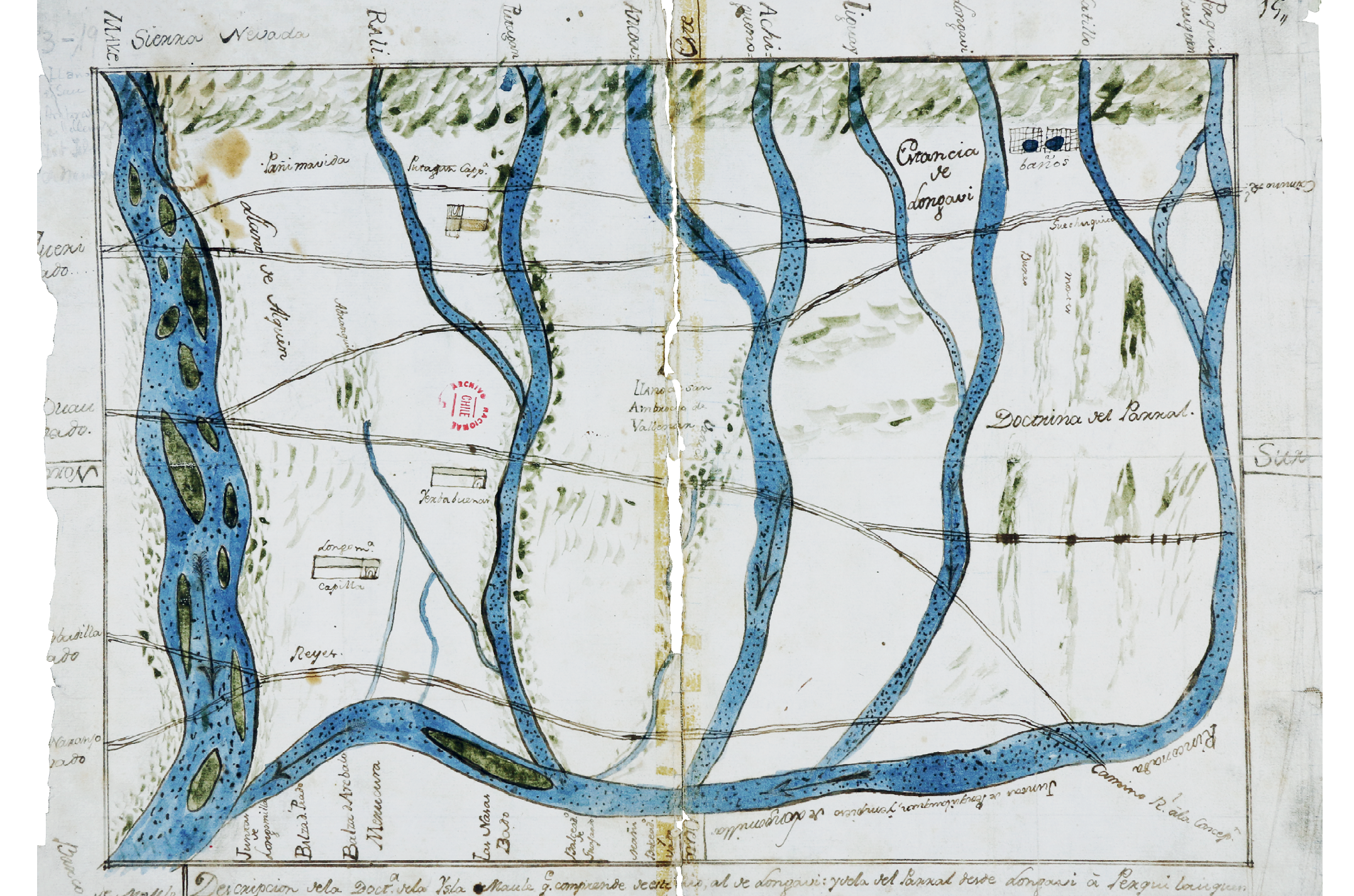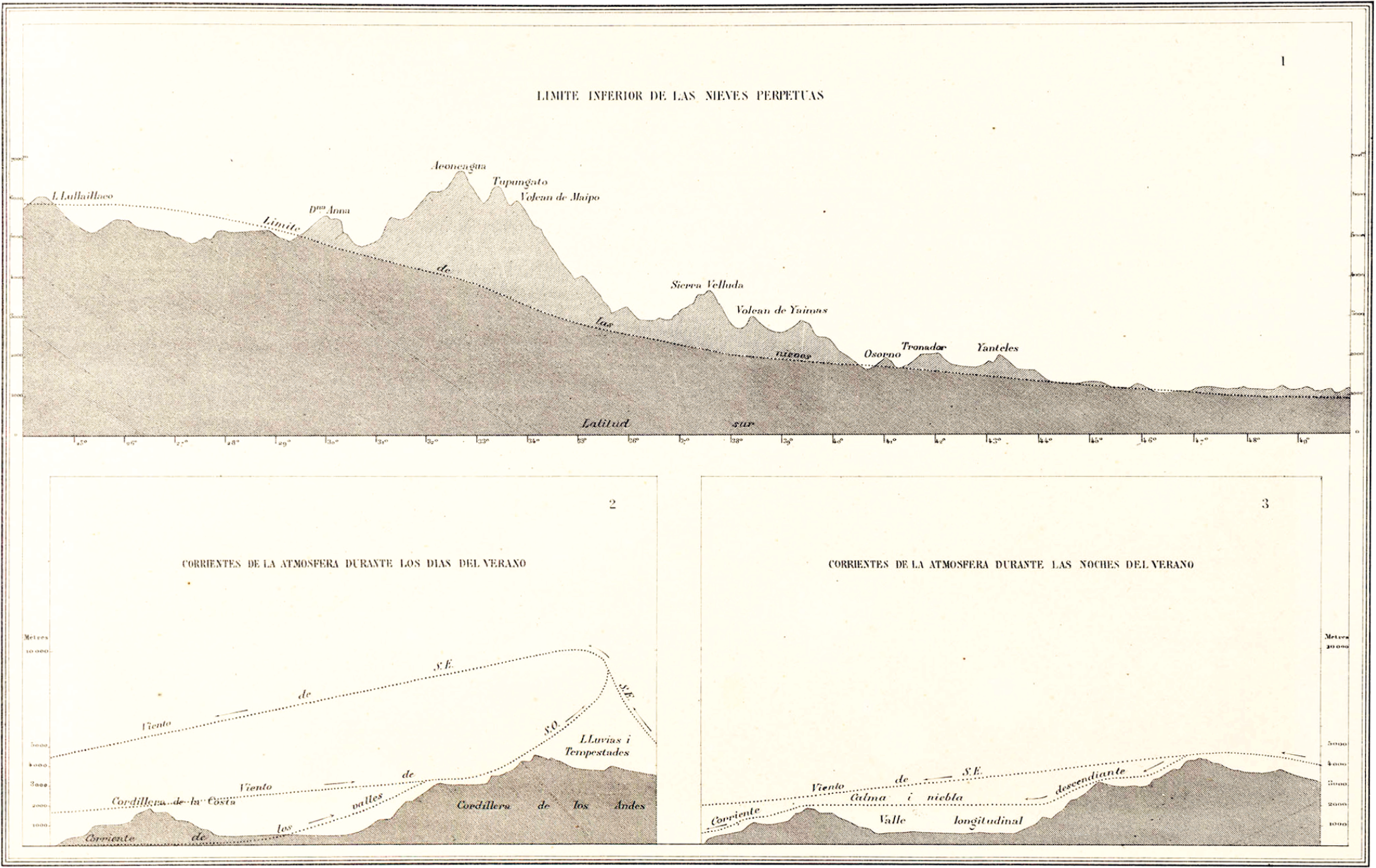
The Maule River estuary outfalls at Constitución, one
of the hardest hit communities following the tsunami
in 2010. Extreme pulses of inundation are common
to these environments where marine sand meets
river silt. At present, many estuaries along the Chilean
coast are infilled by coastal concretization that intervenes
between marine and terrestrial realms. The
wave action following an earthquake brought silty
inundation, erosion, and deposition to the estuarine
coast, a disturbance that is neither unprecedented
nor particularly unique. The lineage of estuary formation
across time is described by early mapping efforts
that creatively articulate the watery southwest
coast of Chile.

A rupture twenty-five kilometers deep beneath the Nazca plate, produced the earthquake, triggering a tsunami that traveled along the
fault at tectonic junctions. The magnitudinous waves spread beneath the coast until making landfall along the shores between Constitución and Concepción. Magnitude is relative power, and its measurement takes into account the energy released at the source. By comparison, intensity is the strength of the shaking produced by the magnitude.